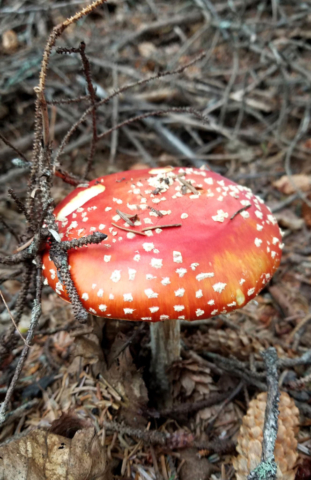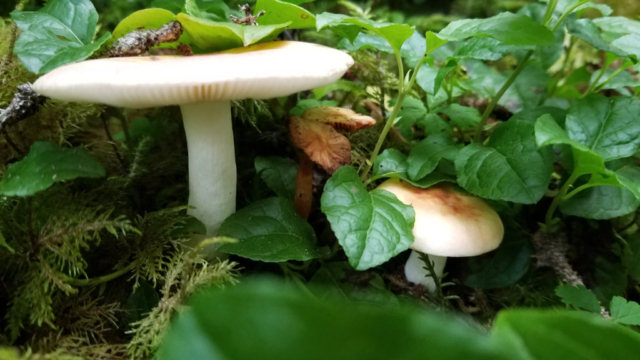Port Townsend, WA, 1-OCT-2020 – In Homer, AK, Caro Babbo, resting on stacked wooden squares called cribs, winterized, locked and watched over, sleeps. I on the other hand toss and turn. Dryland, people, culture, and COVID are difficult transitions.
Give me a few minutes to catch you up.

We spent our days in Seldovia meeting people and making friends, but the only people we will probably stay friends with are Dave and Alison from Vancouver, BC. Alison tells us they commented to each other that Jennifer and I didn’t have an American feel — good or bad, that might explain some things about how we are greeted, treated, and befriended.
The longest conversation I had in Seldovia was with Mark, the skipper of, Guardian, the large fishing vessel across the dock from us. Our politics are different: We each shy away from any topic that leads us there, but like most Americans and inhabitants of this earth, politics aside, we share our core beliefs and observations.

The approaching winter and its attendant loss of easy travel to the mainland, or anywhere else, starts being a topic of conversation and the background for everything that happens once the summer starts to pass.
Seldovia has a ‘‘corporation’’ that is the commercial entity of the local native people. The corporation runs the local ferry. With the seasonal end of the ferry, which makes two round trips per day, trips to Homer rely on water taxis and the increasingly defunded Alaska Marine Highway System ferries. (Low oil prices mean low tax revenues. The Alaska State ferries are among the many things that had to give.)
‘‘Why don’t you leave your boat here across the winter?’’ the Seldovia relief harbormaster asked me.
It is cheap to keep Caro Babbo in the water in Seldovia, less than a thousand dollars per year cheap. But Caro Babbo has a leaky propeller seal and I had no assurance that anyone would keep an eye on her. I had also mistakenly thought I could have Caro Babbo worked on while we were away from her across the winter.
We walked around Seldovia, went out to eat twice, and hung around outside the library using their very fast and remarkably reliable WiFi.
On our first day in Seldovia, we looked from the dock to the row of water-facing restaurants. Traveling and sailing near population hubs, it is difficult to get one’s head around the sight of such a small village as a tourist destination. But the major city for which this is a tourist destination is more than five hours away by car before a ferry trip and is only 100,000 people. Five restaurants in a full tourist season are plenty. This summer, in the time of COVID, two were open.
Alaska is a place that is made of individuals, some of whom gather together to form their opinions, others have their opinions formed by social media, and some just have their own. It is not like Southern California, where the need to be different is really a need to be like everyone else in California – the California difference is the need for the state to be different – I lived there I get to say these things. 😉
So, entering the restaurant we had no expectations of what we would find. Most people in Alaska really do think for themselves and make their own decisions. Dining in, in this restaurant, was forbidden. A back deck over the water was open, the tables were completely full once we took ours.
Our table server wore a mask as did the chef who guided us out the back door when we entered the dining room devoid of tables.
Food was the new American-standard pricing, $14-17 for a hamburger, everything else the same as anywhere else. It does always surprise Jennifer and me that a fish caught ten miles from here costs the same as that fish served 2000 miles from here. We don’t eat fish out generally, especially in Alaska.
The diners sitting on the deck were mixed, some wore masks when not eating, others did not. Sitting outdoors eight or more feet from the nearest other person, we did not.
During our days in Seldovia, we walked around the community, walked to the beach to get cellular service, and spoke to other boaters.
I saw a very traditional wooden gaff-rigged sloop, beamy, and well cared for. Jennifer and I walked around her discussed her lines, her impressive maintenance, and guessed her age.
As we sat in on Caro Babbo’s cockpit on Saturday morning the owners appeared on deck. I must have looked like I was catapulted off the boat. I ran around from our dock to theirs, got their attention and started speaking with them. She wasn’t an old boat. Construction started towards the end of the last century and finished shortly before the start of this one. But she had been out of the water since. The engine was worn but worked. Once in the water, after some considerable time, the planking swelled and she became watertight. The dream is to sail somewhere far away. The owners are a local couple who live and work in Seldovia. Their two sons are high school- and college-aged.
I was intruding by asking so many questions; the novelty of my interest soon waned. They backed out of their slip and sailed off for the day.
While tourism is Seldovias’s major industry, the harbor is a fully working commercial harbor full of fishing boats and ships 150 to 500 ft in length calling Seldovia home. The docks easily accept these vessels.

To the right of the ramp from the shore to the dock, looking from the shore, is a grid where boats can rest out of the water once the tide recedes. To the left is a fish cleaning station with a nine-foot square basket where the remains of fish are thrown, rather than thrown loose into the water as in most harbors (or in specialized trash receptacles, as we would see in Homer.) Curiously, the fish were just left to rot and be eaten by carrion-feeder birds. The major carrion-feeder we normally see, bald eagles, were not among the usual munchers.
The second restaurant we ate in had better food and was truly a bar with food. The bartender was friendly confident and outgoing. Dave and Alison, who we had seen on the dock, sat at the next table and spoke with us.
In my line of sight over Jennifer’s left shoulder, I saw the skipper of Guardian with a short attractive woman. I don’t drink and don’t spend time in bars. I have little experience. My drinking is done among friends in private settings. The woman was drinking double-shot drinks with a beer on the side. As the alcohol took its effect, her posture changed, she became more affectionate, her face became shiny and her features less distinct.
As we spoke with Dave and Alison, one of the crew from Guardian joined them. When I next glanced over, they, three, were gone. Behind me, the rest of the Guardian crew had gathered in an area by the pool table, drinking and talking but not playing pool.
Dave and Alison had just picked up their new 30-foot aluminum boat. It is the same commercial boat we see used as charter fishing boats and water taxis. COVID had completely changed their plans. They had planned to be up here in April to take their boat home down the inside passage to Vancouver where they lived. Now, they would vacation on board and make a decision about what to do as the weeks progressed. They had a slip in Homer the boat builder kept that they could use as they wished.
We expected Port Chatham to be the last place we anchored, it wasn’t. Instead, because we had plenty of time to get to Homer, and the cost of being on the dock at Homer was no different if we stayed a week or a month, we decided to spend time on the hook.
We left Seldovia with a list of places we might stop, one cove at a time on our way to Homer. Eventually, skipping our first stop, we motored straight to Bootlegger Cove. We motored around the cove making a circle of the anchorage suggested by the Seldovia relief harbormaster. It was a perfect hidden-away corner with 17 feet of water. Unfortunately, the tide would drop that night, and every night, by 18 feet. The entire area was dry land at low tide.
I’d been wanting to just be quiet someplace not on a dock, just at anchor. We intended to stay only a night, moving onto Halibut Cove next, but the warnings about the unfriendly locals there and a restricted dock made us wary of moving on. We were comfortable and lazy, never even removing the dinghy from the deck; doing so would have given us dry heat and light in the forepeak but each day was to be our last and then wasn’t. I had wanted to stay somewhere in good weather for four or five days unwinding, relaxing, and being together. Day-by-day, with no intent, we did exactly that.
The days continued to be clear, dry, and sunny. It was a nice vacation from the journey.
The water depth in the center of the cove was thirty-five feet at high tide: comfortable water under the keel at low.
Bootlegger Cove is a vacation-home development with very empty, very nice homes facing the water. We think the name, Bootlegger Cove, is the product of the real estate developer. As our days at anchor progressed, and Labor Day approached, the homes became occupied. This was our signal to move on. A woman dressed in blue from one home waved to us when she arrived and again as we weighed anchor.

The holding in Bootlegger Cove was tenuous. We reset the anchor each day as we slowly dragged following the current.
We’d lost our ‘‘Inside Passage’’ rhythm, where each day we took the dinghy off the deck as part of anchoring. Unpracticed, working with the dinghy was awkward; as part of a daily routine, it was quick, mechanical, and done without communication between the two of us, the same way we dock.
With the dinghy in the water, visits to the shore, whether to land or just to row by, are without a second thought. With the dinghy in the water, the forward cabin is light-filled, we use our Dickinson Diesel heater,* shed clothing, and live in a dry-air cabin.
From Bootlegger’s Cove, Homer is five miles at cultural warp speed. Outside of the cove on the Saturday of Labor Day Weekend, water taxis at 35 knots zip like crazed water beetles. Pleasure motorboats, outboards with George Jetson roof lines, frolic, there is no other word that comes to mind. And as we near Homer, there are sailboats, other sailboats, some that could cross oceans, others designed for coastal work.
To the other sailboats, we are not noteworthy. Only one, which passes close by, returns our wave. We are anonymous.
We are also alone in heading into the harbor. The entrance is a tight gooseneck in which we hear large vessels announce their presence whenever we had the VHF on in Bootlegger Cove. As we begin to enter the narrows, we feel like we have been covered in runabout pheromone as the narrows becomes congested with small runabouts encircling us in tight company.
We confer with the harbormaster on duty, who has not been told to expect us by his colleague. We tell him we’re going to fill up at the fuel dock.
The fuel dock staff behave like it is their first day on the job, and, in retrospect, perhaps it was. The summer regulars, who are generally students, might have left already.
There are three people on the dock as we approach. One grabs a line off our deck unbidden and doesn’t know what to with it. I hear one of the other two say, ‘‘No, not Washington. Washington is WA.’’ Referring to our registration numbers, WN6403SA. He would have been right if we were trying to mail Caro Babbo. For boats, it is WN. A question crosses my mind, at my age, if I correct him, will I prove that he must be right because I can only be wrong?
Later, he teaches me that no gasoline in Alaska has ethanol, so we’re even.
The dockmaster assigns us to J6.
Homer has a serious tidal current through the marina at certain times: 28 feet of vertical water must flow through that ‘‘hard gooseneck.’’ The venturi principle says that water must move pretty darn fast to get in and out of the harbor through the small entrance.
Jennifer demonstrates that she can work with a cross current. We dock and walk to the harbormaster’s office. It is our introduction to the COVID world. A large banner tells us to call, not enter. We enter the vestibule, press the buzzer, and speak with Tamara through the intercom.

After a few moments, Tamara tells us she doesn’t want us to rush to make decisions regarding how long we will stay. It takes us a few moments to realize that she wants to LEAVE. It’s Labor Day Weekend, she wants to get out of the office.
The swarm of small runabouts mobbing us as we entered the gooseneck? The boats are only rented until 4 pm, we entered the gooseneck at 3:50.
* When we can’t use the Dickinson and there is enough electrical power, we use the Webasto forced air diesel heater. While the Dickinson runs non-stop at one setting, full blast, the Webasto is controlled by a household thermostat: very luxuriant but very loud.









